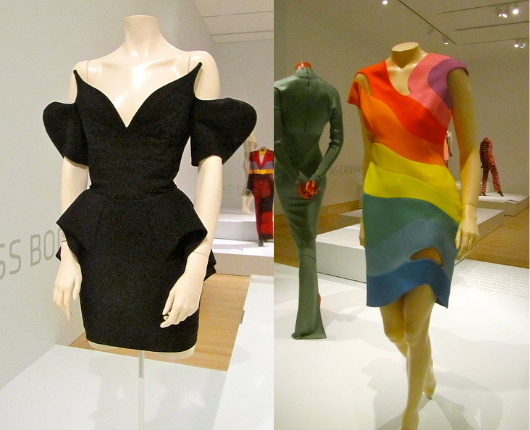Remembering Manfred Thierry Mugler (1948-2022) and his revolutionary fashion designs
By ANGIE CUMMINGS — arts@theaggie.org
Whether or not you know or care about fashion, it’s hard to avoid Mugler’s striking designs. Even after over 30 years in the industry, his work managed to stay fresh and relevant to the ever-changing tastes of the fashion world. Manfred Thierry Mugler launched his first collection in 1974, and by the ‘80s, he was a fashion powerhouse, known for his hyper-feminine designs, highly structural pieces and brightly-colored creative concepts.
Most of Mugler’s work can be identified by cinched waists, exaggerated shoulders and a general “femme-bot” feel. Inspired by the iconic feminine designs of the ‘40s and ‘50s Balenciaga and Dior, Mugler created revolutionary (and sometimes controversial) avant-garde fashion that somehow felt timeless. From his recent minimalist Fall/Winter 2021 collection to even his most extravagant gowns and corsets of the ‘90s, there is always a definite sense of power in his work. Even a sheer glittery dress is never understated when it’s from Mugler — from the way his designs are presented on runways to the celebrities he dresses, the women who wear Mugler always seem in control of the room.
Mugler’s creations have been worn time and time again by some of the most influential people in pop culture, only further establishing his long-lasting legacy as a forefather of bold and modern fashion. Some of his muses include Diana Ross, David Bowie, Lady Gaga, Beyoncé and essentially every top supermodel from each decade. He dressed these icons in latex, metal, leather and other materials previously deemed unconventional in the high-fashion world, but we have now become fairly accustomed to seeing them on runways and red carpets.
His use of these materials and constructions reminiscent of fetish wear has always branded Mugler as controversial, but it is also what makes so many appreciative of his impact on mainstream fashion. Fetish has always been a part of the queer community, and for many years, it was something considered shameful that was hidden from the public eye. But Mugler’s fashion designs turned it into a joyful celebration of these visual components.
Mugler’s own fascination with body modification is evident in the ways he has played with proportions and construction on many of his pieces over the years, from his Les Cowboys Spring 1992 collection in which he transformed his models into car and motorcycle cyborgs, to Kim Kardashian’s impossibly sculpted 2019 Met Gala “wet dress” dripping with crystals. It is clear from just a glance at Mugler’s work that the image he creates is unique from most luxury designers, as their looks often create an image of a perfect lady or even a doll-like sense of femininity. What Mugler creates is almost superhuman, often combining animalistic or mechanical motifs with his exaggerated feminine signature to create futuristic hybrid looks.
Many of Mugler’s collections could easily be the wardrobe of a “yassified” superhero film, with some incredibly badass heroines (or even cooler villains) dominating the world. One could even argue that Manfred Thierry Mugler was the Stan Lee of modern fashion (I am the only one arguing for this), blowing audiences away year after year, and always making headlines with some of the biggest names in the business.
With his passing, many in the fashion world mourned the end of a vibrant and tantalizing era of fashion, but Mugler’s legacy will live on in his revolutionary fashion. Dresses, corsets and bodysuits are not always exciting, but Mugler showed the world that there is room for showstopping and conceptual pieces in what can often be the monotonous world of luxury fashion.
Written by: Angie Cummings — arts@theaggie.org




